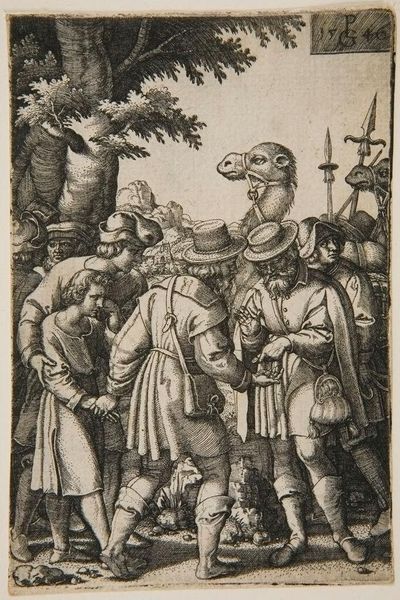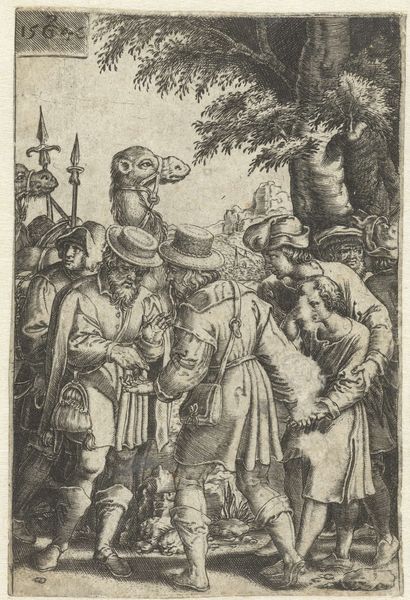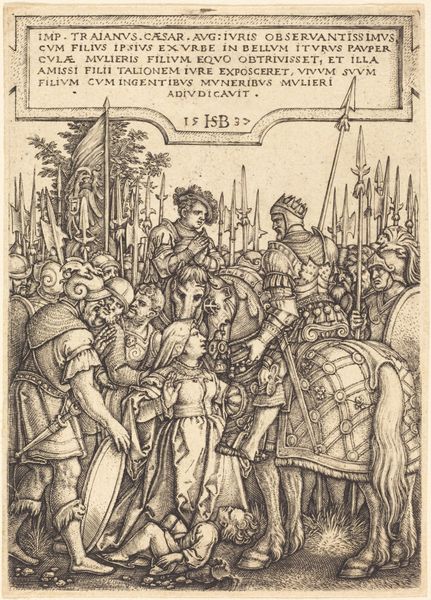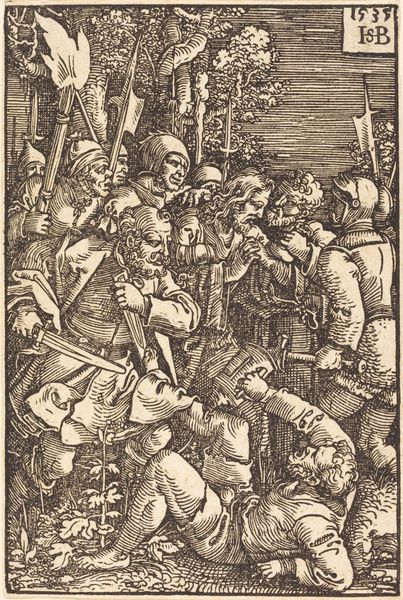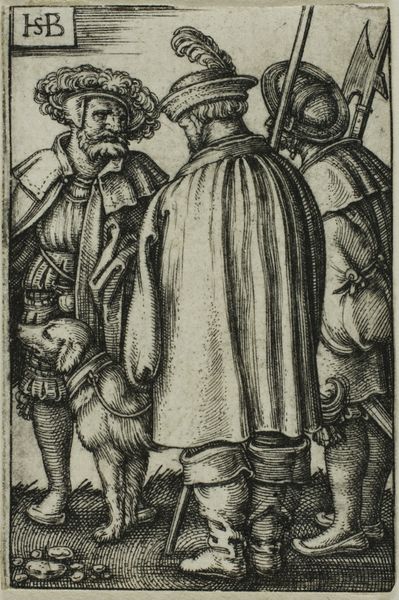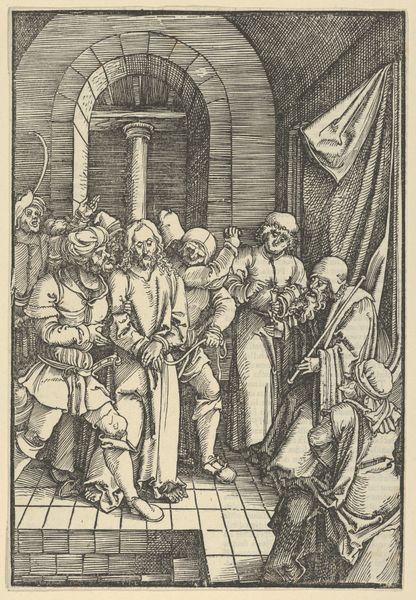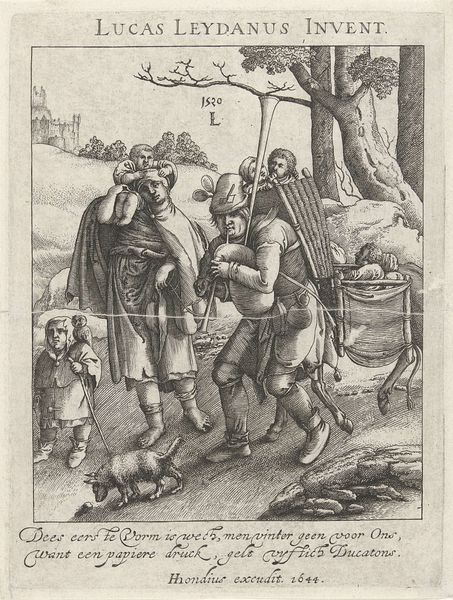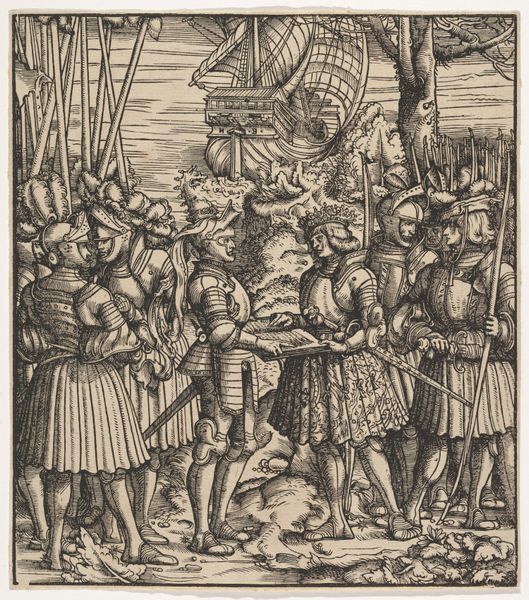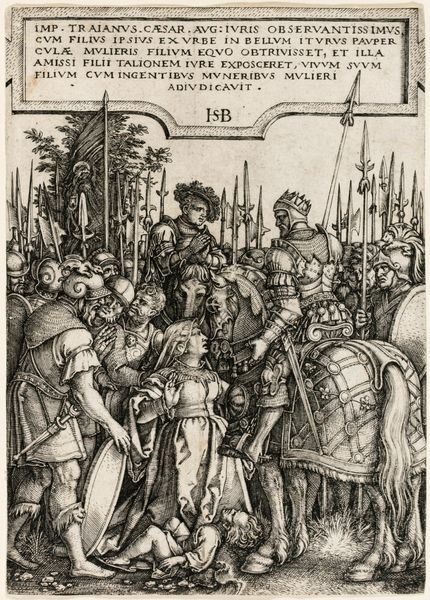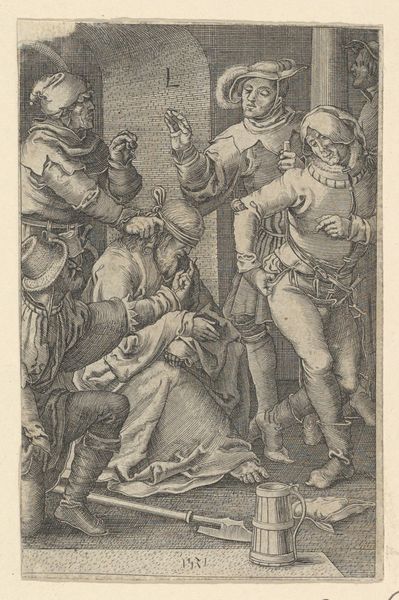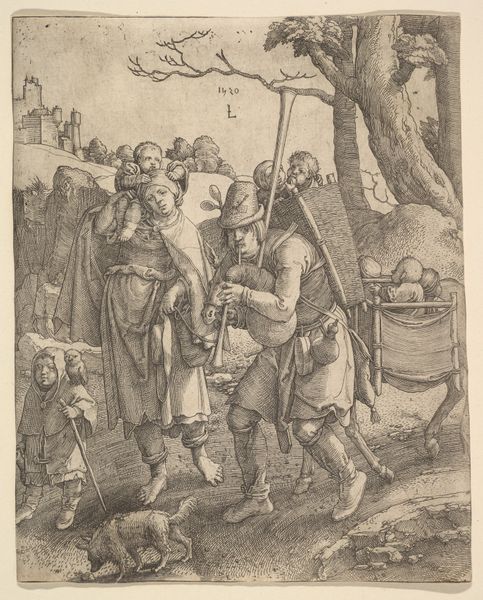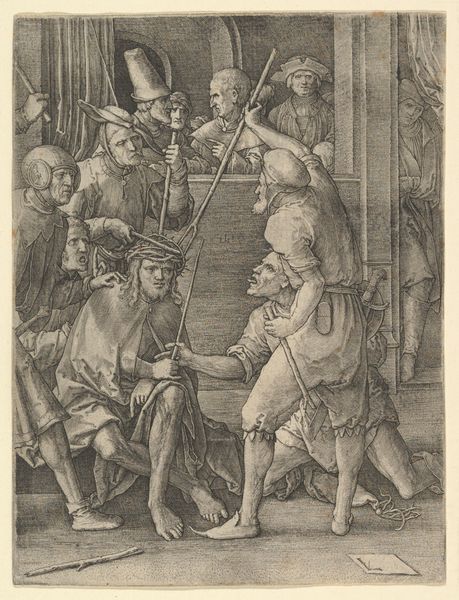
Joseph Sold to the Merchants, from The Story of Joseph 1546
0:00
0:00
drawing, print, engraving
#
drawing
#
narrative-art
# print
#
figuration
#
11_renaissance
#
history-painting
#
northern-renaissance
#
engraving
Dimensions: Sheet: 4 1/2 × 3 1/16 in. (11.5 × 7.7 cm)
Copyright: Public Domain
Curator: Looking at this print, the mood that strikes me most is betrayal—a hushed transaction, shadowed faces... Editor: Indeed. What you're observing is "Joseph Sold to the Merchants," an engraving by Georg Pencz, dating back to 1546. The artwork, currently housed in the Metropolitan Museum of Art, forms part of Pencz’s “Story of Joseph” series. Curator: Pencz really captured the tension inherent in this biblical narrative. Note how Joseph’s downward gaze seems to mirror his fate. The image throbs with symbolism. Do you perceive the camel behind the merchants as a symbol for wealth, long journeys, or something else? Editor: All those things, likely. Camels represented trade routes and foreign opulence in the 16th century. Its very presence signifies that Joseph is now entering a very different sphere of existence, one of enslavement in a foreign land. Curator: I wonder about the role of prints like this one during the Reformation. Pencz, though Lutheran, found himself at odds with Nuremberg’s city council, suggesting his art was politically charged. Does this print reinforce existing socio-political hierarchies or offer subtle criticism of those with power? Editor: That is a fascinating point. Printmaking allowed wider dissemination of ideas than ever before. Considering the historical context, a detailed series of engravings recounting a foundational biblical narrative became potent cultural messaging. Note how the rendering of garments seems true to the period too, emphasizing everyday realism in what is an old religious story. Curator: True. It certainly encourages audiences to reflect on moral questions outside the confines of the Church, something that undoubtedly appealed during those years of upheaval. These symbols serve both religious education and potentially, subversive political dialogue. Editor: Absolutely. Ultimately, I am struck by how this seemingly simple print manages to condense potent narrative threads and layered cultural significance within such a confined space. Curator: Agreed. This small engraving really encapsulates a huge amount about society and the religious and political ideas of its day.
Comments
No comments
Be the first to comment and join the conversation on the ultimate creative platform.

